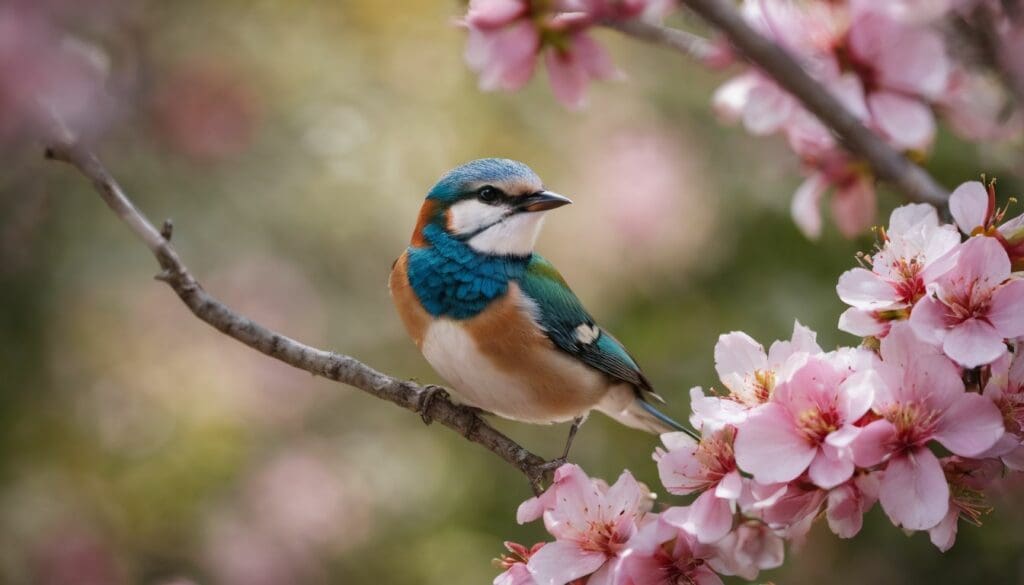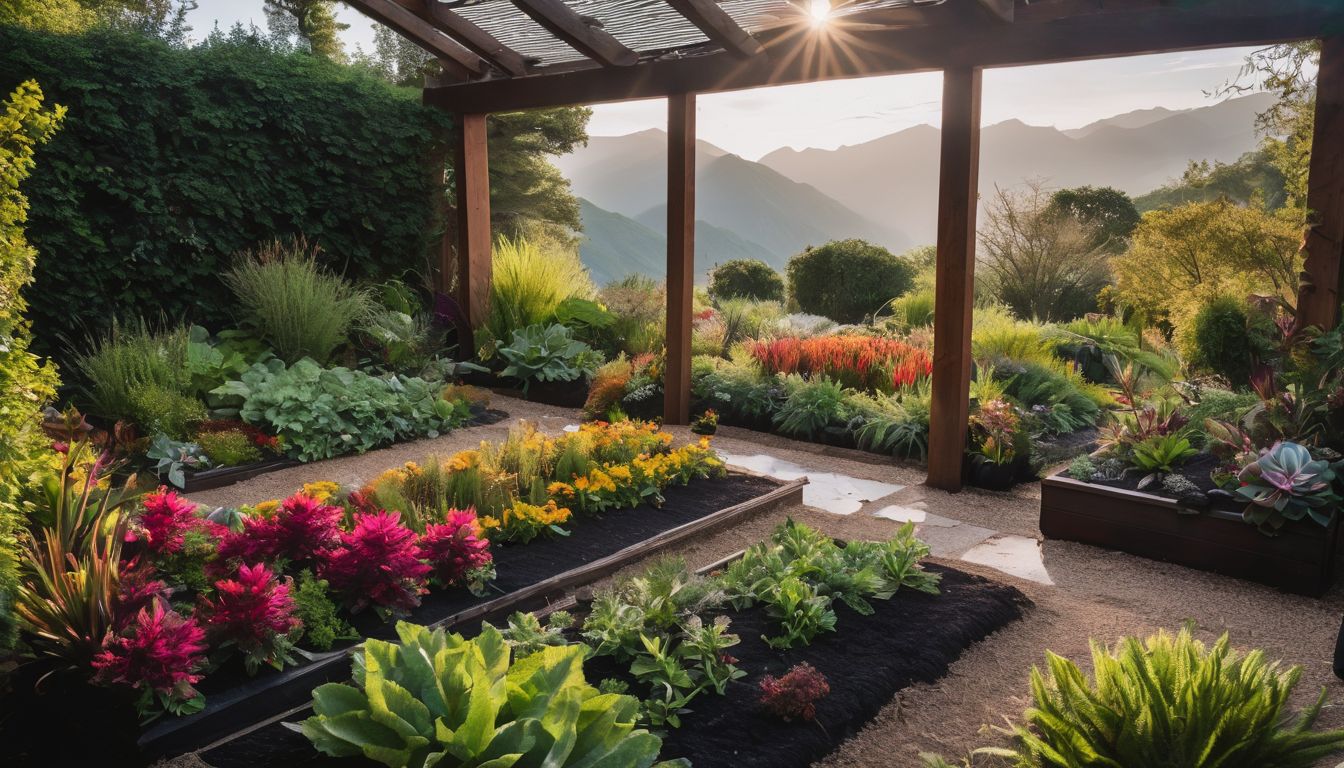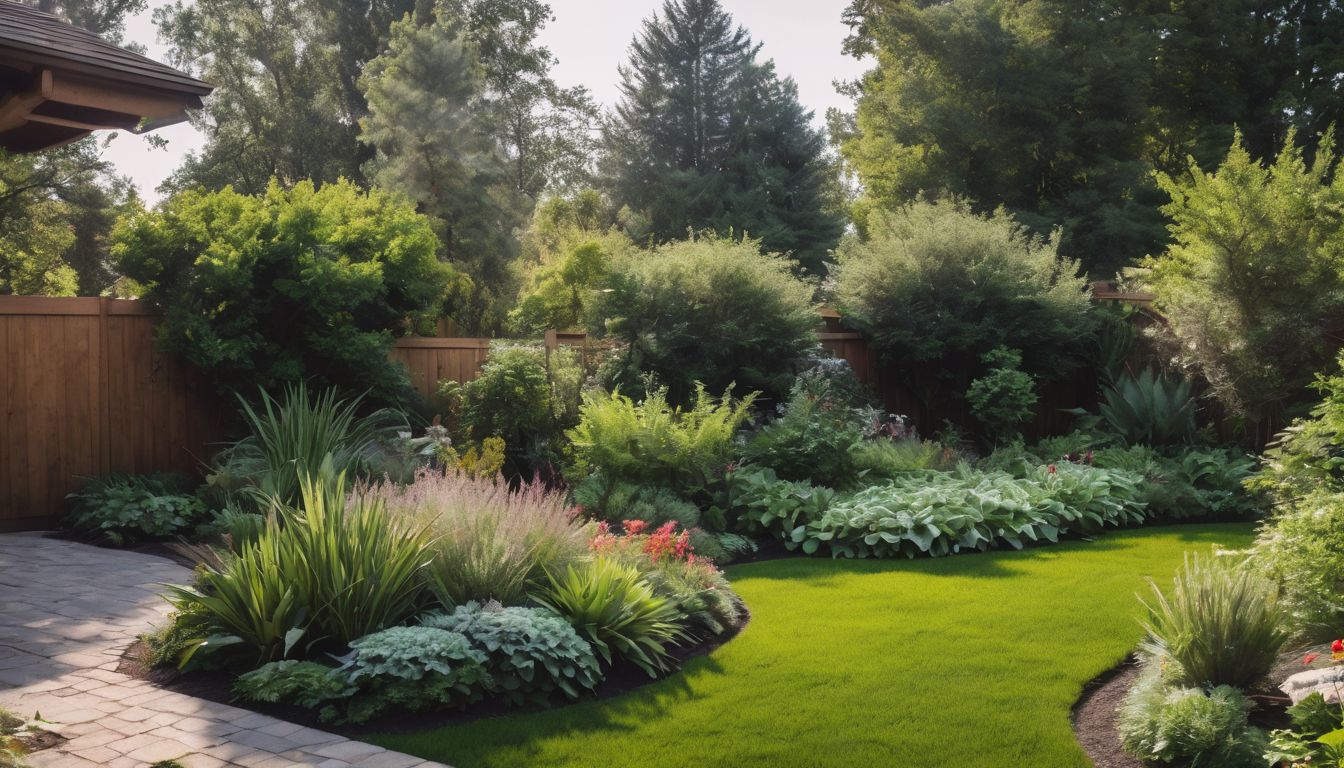Watching birds flit about and butterflies dance in your garden can be a rare sight these days. Gardens are vital oases that sustain various wildlife, yet many species are in decline due to habitat loss.
This article guides you through practical steps to transform your outdoor space into a thriving haven for creatures great and small. Dive in and become nature’s ally.
Key Takeaways
- Incorporating native plants in your garden is vital for local wildlife as they provide natural food and shelter, which helps maintain biodiversity and sustains various species.
- Adding a variety of food sources like nectar – rich flowers, fruit trees, bird feeders, and water features such as birdbaths or ponds attracts different kinds of wildlife while supporting ecological balance.
- Creating shelters with woodpiles, leaving leaf litter undisturbed, allowing grass to grow longer, and installing features like hedgehog highways contributes to the survival of numerous creatures within urban gardens.
- Observing and recording the wildlife in your garden can foster appreciation for nature while allowing you to monitor the effectiveness of your conservation efforts.
- Engaging in wildlife – friendly practices such as building bee hotels or providing nesting boxes can transform your garden into a thriving habitat essential for pollinators and beneficial insects.
The Importance of Garden Wildlife Conservation
Garden wildlife conservation plays a crucial role in maintaining ecological balance right on our doorsteps. Protecting the insects, birds, and other creatures that inhabit our gardens ensures the continuation of vital pollination processes and natural pest control.
It’s not just about preserving individual species; it’s about nurturing the complex web of life that supports food production and healthy ecosystems.
Involvement in backyard wildlife conservation is an actionable step towards promoting biodiversity within urban environments. Gardens serve as mini reserves where wildlife can thrive amidst sprawling cities and towns.
By creating habitat features such as bee hotels or butterfly gardens, homeowners contribute to habitat restoration efforts essential for insect conservation. Encouraging wildlife into your yard doesn’t just bring aesthetic pleasure; it underlines your commitment to sustainable environmental practices, safeguarding nature for future generations right from home.
Seven Simple Ways to Create a Wildlife-Friendly Garden
– Plant native vegetation to provide natural food and shelter for wildlife, making sure to choose plants that are suitable for the local climate and soil conditions.
– Provide food sources for wildlife by installing bird feeders, planting fruit-bearing trees and shrubs, and leaving out water bowls or dishes for animals to drink from.
Plant Native Vegetation
Choose plants that are native to your region. Native vegetation provides food and shelter for local wildlife, attracting a variety of species to your garden. By planting native flora, you support the natural biodiversity of your area and create a sustainable habitat for pollinators, birds, and other wildlife.
This simple action promotes the preservation of indigenous plant species while contributing to the conservation efforts in your community.
Native vegetation also requires less maintenance and water, making it an environmentally friendly choice for your garden. Additionally, it can help control erosion and improve soil quality.
Provide Food Sources for Wildlife
To support a healthy ecosystem, it’s essential to provide abundant food sources for wildlife in your garden. By planting nectar-rich flowers such as lavender, buddleia and echinacea, you can attract bees and butterflies, aiding pollination while providing an important source of sustenance for these beneficial insects.
Additionally, including fruit-bearing trees like apple or cherry not only adds aesthetic value to your garden but also provides nourishment for birds and mammals throughout the year.
While considering food sources for wildlife in your garden remember that variety is key; diverse offerings will support a wider range of species. Incorporating native plants also ensures that local wildlife has access to familiar and nutritious food sources.
Add Water Sources
After providing food sources for wildlife, it’s essential to add water sources to create a complete habitat. Installing a birdbath or small pond will attract birds, insects, and other wildlife to your garden.
By incorporating this feature, you’ll offer necessary hydration and bathing spots for creatures such as birds and butterflies. Providing these water sources is crucial in supporting the overall biodiversity of your garden, promoting a sustainable and balanced ecosystem.
Incorporating water features into your garden not only supports local wildlife but also contributes to the conservation of urban habitats. These additions play a significant role in fostering an environment where diverse species can thrive, ensuring that your garden becomes an inviting haven for various forms of life.
Create a Woodpile and Leave Leaf Litter
Create a woodpile in your garden to provide shelter for small mammals, insects, and amphibians. Leave leaf litter around the base of trees and shrubs to create habitat for beneficial insects, such as beetles and earthworms.
These natural features serve as important wildlife habitats, supporting biodiversity in your garden.
Leaving leaf litter also enriches the soil with organic matter as it decomposes. This practice encourages a healthy ecosystem by providing food sources and nesting areas for many species of wildlife.
Let Things Grow Wild
Allowing your garden to grow wild creates a natural haven for local wildlife. By letting grasses and flowers grow freely, you provide essential food sources and shelter for insects, birds, and small mammals.
Wild areas in your garden also attract pollinators like bees and butterflies, contributing to the biodiversity of your outdoor space.
Encouraging wild growth can be as simple as leaving some areas untouched or planting native species that thrive without excessive upkeep. This approach promotes sustainable gardening practices while supporting wildlife preservation efforts right in your own backyard.
Record and Observe Wildlife
After letting things grow wild in your garden, take the opportunity to record and observe wildlife. Set up a few bird feeders and keep track of the different species that visit. Use a wildlife camera to capture footage of animals that frequent your garden, such as hedgehogs, foxes, or even bats.
Encourage children to take part by making simple wildlife journals to log their observations. Engaging with nature in this way will help inspire a love for the environment and respect for all living creatures.
Additional Tips for Making Your Garden Wildlife-Friendly
– Build a hedgehog highway to allow small mammals to move freely between gardens and provide them with shelter. There are many more tips to explore, so keep reading to learn how you can create a haven for wildlife in your garden!
Build a Hedgehog Highway
Create a hedgehog highway in your garden by cutting a small hole at the bottom of fences or digging a channel beneath them. This allows these spiky creatures to roam between gardens, seek food, and find mates, which is crucial for their survival.
By connecting green spaces, you support hedgehog populations and enhance biodiversity in urban areas. Building a hedgehog highway not only benefits these adorable creatures but also contributes to the overall health and balance of your local ecosystem.
To encourage more wildlife-friendly gardening practices, consider joining forces with neighbors to create an interconnected network of hedgehog highways throughout your community. Together, you can transform urban landscapes into sanctuaries for diverse species while promoting sustainable wildlife conservation efforts on a larger scale.
Let Your Grass Grow
Encourage biodiversity in your garden by letting your grass grow a little longer. By allowing the grass to reach a moderate height, you provide shelter and food for various insects and small animals.
This simple act promotes a healthier ecosystem in your garden, supporting pollinators and creating a more diverse habitat for wildlife. Additionally, longer grass helps prevent soil erosion and reduces the need for frequent mowing, contributing to sustainable wildlife gardening practices.
By embracing this natural approach in your garden, you can foster an environment that supports local fauna while minimising maintenance efforts.
Care for Local Birds
Encourage birdlife in your garden by providing a variety of food sources. Hang bird feeders filled with nuts, seeds, and fat balls to attract different species. Add nesting boxes in secluded spots to provide safe shelter for local birds.
Plant berry-producing shrubs and native trees as natural food supplies throughout the year. Install a birdbath or shallow pond to offer drinking and bathing opportunities, which will also aid insect control in your garden.
By creating these inviting features, you’ll be supporting urban wildlife conservation efforts while bringing joy to your outdoor space.
Support your local avian population by maintaining a clean feeding area and keeping predators away from bird nests. Regularly clean bird feeders and water sources to prevent the spread of disease among birds.
Bring in Pollinators
Attract pollinators to your garden by planting native flowers that provide nectar and pollen. Create a pollinator-friendly environment with bright, fragrant blooms such as lavender, bee balm, and sunflowers.
Installing a variety of flowering plants will attract bees, butterflies, and other beneficial insects essential for plant reproduction.
Encourage biodiversity in your garden by establishing a welcoming habitat for pollinators. Incorporating a mix of flowering plants will draw in various species of pollinators throughout the growing season.
By creating an inviting space for these essential creatures, you’ll not only enjoy a more vibrant garden but also contribute to the conservation of important wildlife populations.
Create Habitat Features
Enhance your garden’s wildlife appeal by incorporating habitat features such as birdhouses, bat boxes, and brush piles. These additions provide shelter and nesting opportunities for a range of creatures, contributing to a thriving ecosystem.
Place strategically around your garden, these features can attract various species of birds, bats, insects, and small mammals – adding vibrancy and diversity to your outdoor space.
Consider creating a haven for wildlife in your garden through purposeful habitat features carefully placed to support local biodiversity. By integrating well-positioned shelters and nesting spots throughout your yard or garden landscape, you can encourage the presence of diverse wildlife communities while enjoying their beauty from the comfort of home.
How to Bring Wildlife into Your Garden
Plant butterfly and bird-friendly gardens, create a bee and bug hotel, and provide nesting boxes for birds to attract wildlife into your garden. Discover more ways to create a wildlife-friendly garden by reading the full blog!
Plant Butterfly and Bird-Friendly Gardens
To attract butterflies and birds to your garden, incorporate native plants that provide nectar and food for these creatures. Install a variety of flowers such as lavender, coneflower, and milkweed to entice butterflies.
Plant trees and shrubs like holly, juniper, or dogwood to offer shelter and nesting places for birds. By creating a diverse range of flora, you will encourage the presence of beautiful wildlife in your garden.
Integrating vegetation that attracts butterflies and birds enhances biodiversity while supporting the conservation of these species. In addition to providing essential sustenance for pollinators like bees and other beneficial insects, this approach promotes a healthier ecosystem within your outdoor space.
Create a Bee and Bug Hotel
To attract more pollinators and beneficial insects to your garden, consider creating a bee and bug hotel. This simple DIY project provides essential nesting spaces for solitary bees, ladybugs, lacewings, and other helpful insects.
By using materials like bamboo tubes, drilled wood blocks, and even natural reeds or straw, you can offer these creatures safe places to rest and nest. Place the hotel in a sunny location with protection from strong winds to encourage occupancy by these vital garden allies.
Supporting pollinators and beneficial insects is crucial for maintaining a healthy ecosystem in your garden. Creating a bee and bug hotel helps ensure that these important creatures have proper shelter while also increasing their presence in your outdoor space — contributing to overall biodiversity conservation efforts.
Conclusion
In conclusion, creating a wildlife-friendly garden is essential for promoting biodiversity. Supporting garden wildlife conservation efforts can help protect and enhance natural habitats.
By implementing these simple tips, you can make a meaningful difference in attracting wildlife to your garden. Enhancing garden habitat for wildlife is not only beneficial for the environment but also provides an opportunity to observe and connect with nature on a daily basis.
FAQs
1. What is garden wildlife conservation?
Garden wildlife conservation involves creating a wildlife-friendly garden to support and attract various forms of local wildlife, preserving biodiversity.
2. How can I make my garden more attractive to wildlife?
You can make your garden a haven for creatures by planting native species, setting up bird feeders, ensuring pollinator protection, and using natural gardening practices.
3. What are some features I can add to help with wildlife habitat conservation in my garden?
Adding features like bird baths, insect hotels, and log piles enhances habitat for wildlife; it encourages birds, insects, and other animals to visit your garden.
4. Why is it important to use wildlife-friendly landscaping in my garden?
Wildlife-friendly landscaping promotes biodiversity in your garden by providing essential resources for various species and helps in supporting overall ecosystem health.
5. Can I still have a beautiful garden while encouraging wildlife?
Absolutely! Through wildlife-friendly gardening tips such as utilising beautiful native plant gardening techniques you’ll not only enhance the visual appeal but also contribute significantly to conserving local flora and fauna.





